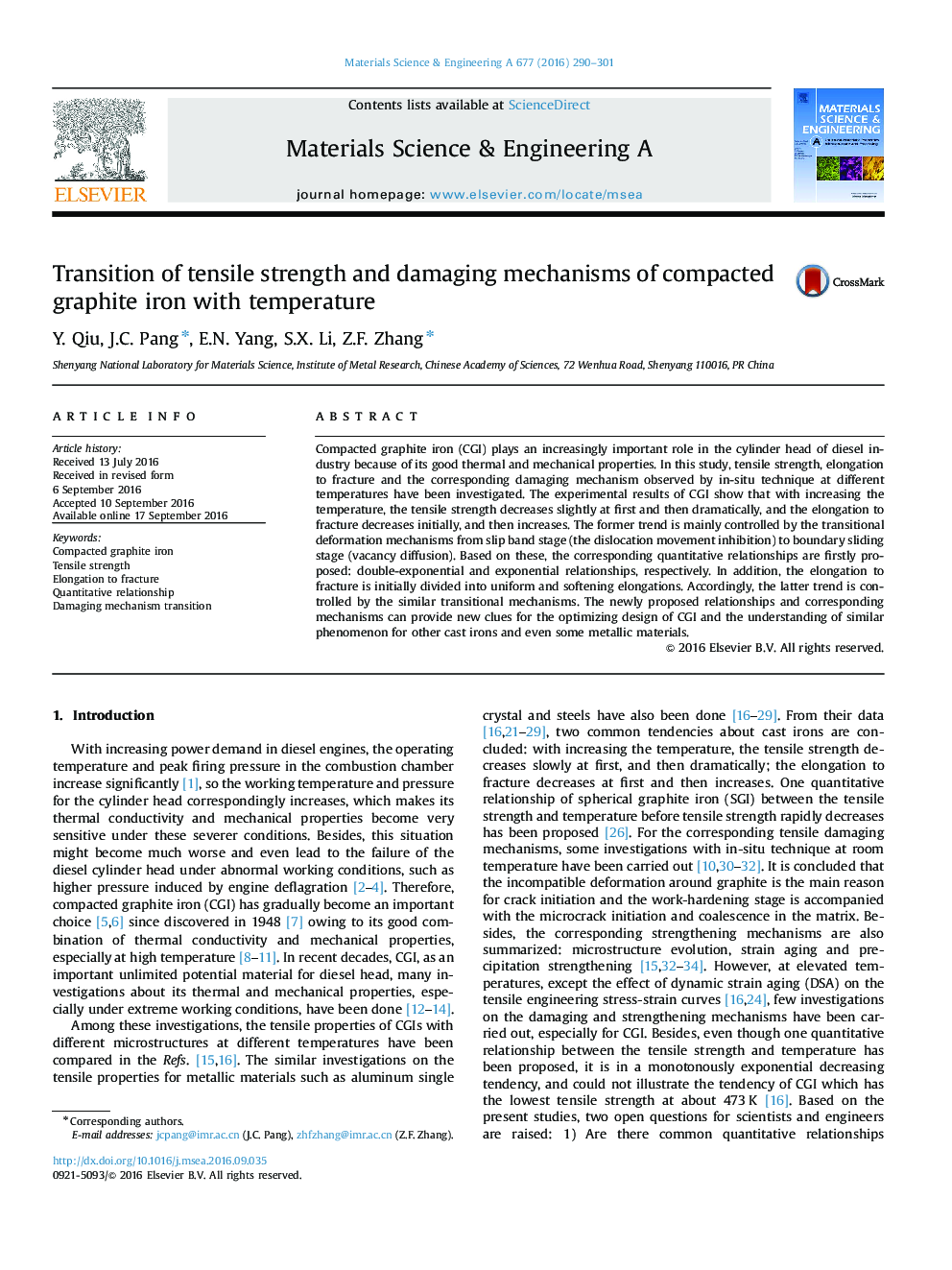| Article ID | Journal | Published Year | Pages | File Type |
|---|---|---|---|---|
| 5456676 | Materials Science and Engineering: A | 2016 | 12 Pages |
Abstract
Compacted graphite iron (CGI) plays an increasingly important role in the cylinder head of diesel industry because of its good thermal and mechanical properties. In this study, tensile strength, elongation to fracture and the corresponding damaging mechanism observed by in-situ technique at different temperatures have been investigated. The experimental results of CGI show that with increasing the temperature, the tensile strength decreases slightly at first and then dramatically, and the elongation to fracture decreases initially, and then increases. The former trend is mainly controlled by the transitional deformation mechanisms from slip band stage (the dislocation movement inhibition) to boundary sliding stage (vacancy diffusion). Based on these, the corresponding quantitative relationships are firstly proposed: double-exponential and exponential relationships, respectively. In addition, the elongation to fracture is initially divided into uniform and softening elongations. Accordingly, the latter trend is controlled by the similar transitional mechanisms. The newly proposed relationships and corresponding mechanisms can provide new clues for the optimizing design of CGI and the understanding of similar phenomenon for other cast irons and even some metallic materials.
Related Topics
Physical Sciences and Engineering
Materials Science
Materials Science (General)
Authors
Y. Qiu, J.C. Pang, E.N. Yang, S.X. Li, Z.F. Zhang,
